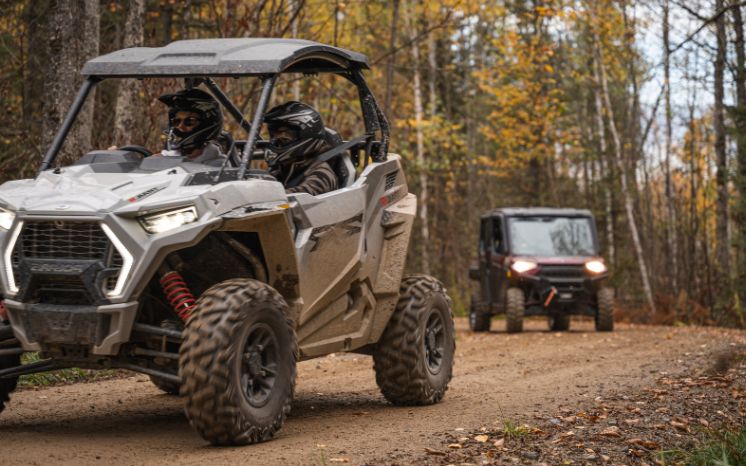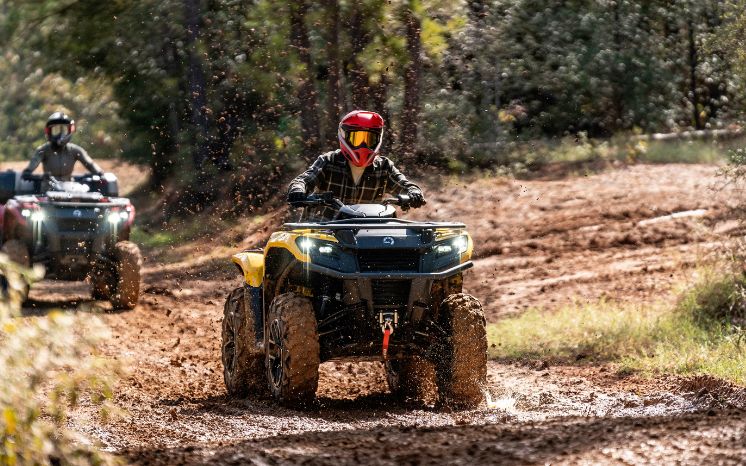Bypassing the ignition switch on an All-Terrain Vehicle (ATV) can be a necessary step in certain situations. If you’ve lost your keys or the ignition switch has been damaged, knowing how to bypass it can get your ATV up and running again.
However, it’s crucial to understand that this process should only be undertaken in specific circumstances. As it involves the vehicle’s electrical system, extensive care must be taken to avoid potential damage or hazards. In the following sections, we will guide you on “How to Bypass Ignition Switch on an ATV” safely and efficiently.
Remember, this information should be used responsibly and is intended for troubleshooting or emergency situations only. Be sure to consult a professional if you’re unsure about the process.
How To Bypass Ignition Switch On ATV
Bypassing the ignition switch on an ATV can be done in a few simple steps, assuming you have some basic knowledge of electrical systems and tools. Additionally, it’s essential to follow these steps precisely to ensure your safety and prevent any damage to your vehicle.
Step 1: Disconnect the Battery
Before attempting any repairs or modifications on your ATV’s electrical system, always disconnect the battery. This step is crucial as it ensures that no electrical current is running through the vehicle, minimizing the risk of shock or fire hazards.
Step 2: Locate the Ignition Switch
The ignition switch on an ATV can usually be found under the handlebars or near the front fender. It’s essential to identify and understand its components before attempting any bypassing methods. The switch typically has two-wire harnesses, one for the battery and another for the starter.
Step 3: Use a Jumper Wire
Now that you’ve located the ignition switch, it’s time to use a jumper wire to bypass it. Take a piece of insulated wire and strip both ends, exposing the copper wires inside. Connect one end of the wire to the positive terminal of the battery and the other end to the positive side of the starter wire harness.
Step 4: Turn on the Ignition
With your jumper wire in place, turn on the ignition switch. If everything is connected correctly, you should hear a clicking sound from the starter motor, indicating that it’s receiving power. This method essentially bypasses the switch and allows you to start your ATV without a key.
Step 5: Remove the Jumper Wire
After starting your vehicle, it’s crucial to remove the jumper wire immediately. Leaving it in place can cause damage to the starter or other components in the electrical system. Once removed, turn off the ignition switch, and disconnect the battery before proceeding with any other repairs or maintenance.
See more: How To Clean Motorcycle Windshield
Troubleshooting Common ATV Ignition Switch Problems

Often, problems with an ATV ignition switch can be traced back to a few common issues. Ensuring you understand these problems enables you to troubleshoot effectively and get your ATV back in action promptly.
A common problem is a worn-out or broken key. If the key is not turning in the ignition or turns without starting the vehicle, it’s a clear sign of a damaged key. In this case, obtaining a new key from a reputable locksmith or dealership can resolve the issue.
Another prevalent issue is a faulty ignition switch. Over time, the switch’s internal components can wear out or become damaged, preventing the ATV from starting. If your key turns but doesn’t start the vehicle, or if there’s any difficulty turning the key, you may have a faulty ignition switch. Replacing the ignition switch can rectify this issue.
Corrosion on the ignition switch can also prevent the ATV from starting. This usually arises from exposure to moisture, dirt, and other outdoor elements. Regular cleaning and maintenance of the ignition switch can help avoid corrosion.
Lastly, a malfunctioning starter solenoid, responsible for transmitting electrical current from the battery to the starter motor, can cause ignition problems. If the solenoid is faulty, the starter won’t receive the necessary power to turn over the engine, even if the ignition switch is working perfectly. In this scenario, replacing the starter solenoid should solve the issue.
FAQs
As the process of bypassing an ignition switch on an ATV involves dealing with the vehicle’s electrical system, it’s natural for you to have some questions or concerns. We’ve compiled a list of frequently asked questions to help clarify some common doubts and provide additional information.
What are the basic safety precautions to follow when bypassing an ignition switch on an ATV?
When bypassing the ignition switch on an ATV, your safety is paramount. First, it’s crucial to disconnect the battery, ensuring no electrical current is flowing through the ATV’s system. This step helps minimize the risk of electrical shocks or fire hazards.
Also, use insulated tools and wear safety gloves to protect yourself. Besides, it’s recommended to work in a dry and well-lit area to avoid any accidental damage or injuries.
Also, maintain a calm and patient demeanor throughout the process. Rushing through the steps or using force can potentially cause damage to the ATV’s electrical system or lead to personal injuries. Lastly, always remember that if you feel uncomfortable or unsure at any point, it’s best to consult a professional mechanic.
What should I do if the ATV doesn’t start after bypassing the ignition switch?
If the ATV doesn’t start after bypassing the ignition switch, there could be several potential reasons. Firstly, check your connections. Ensure that the jumper wire is securely connected from the battery’s positive terminal to the starter wire harness. An improper connection could prevent the ATV from starting.
If all connections are correct, the issue might lie elsewhere in the electrical system. There could be a problem with the starter motor or the starter solenoid. In such cases, these components might need to be replaced. If you’re unable to identify or fix the problem, consider seeking help from a professional mechanic.
Can I permanently bypass the ignition switch on my ATV?
While it’s technically possible to permanently bypass the ignition switch on your ATV, it’s not recommended for a few reasons. The ignition switch serves as an essential security feature, preventing unauthorized use of the vehicle. Bypassing it permanently could expose your ATV to theft.
Moreover, permanently bypassing the ignition switch could potentially lead to long-term damage to the ATV’s electrical system. The bypass process is meant to be a temporary solution for emergency situations or troubleshooting purposes. The best course of action for ignition switch problems is usually a proper repair or replacement.
How often should I replace the ignition switch on my ATV?
The ignition switch doesn’t have a set lifespan, and its longevity depends on several factors like usage, maintenance, and weather conditions. However, if you’re experiencing problems like difficulty turning the key, the key turning but the ATV not starting, or a stuck key, it might be time to replace the ignition switch.
Regular preventative maintenance and inspections can help identify potential issues early and prolong the lifespan of the ignition switch.
Final Thoughts
Bypassing the ignition switch on an ATV is a skill that can prove beneficial in certain situations. Whether it’s a quick fix when you’ve lost your key or a means of diagnosing a bigger problem, understanding how to bypass the ignition switch can save both time and effort.
However, it’s important to remember that this process is ideally a temporary solution. While it can help get your ATV started in a bind, it is not a substitute for a proper repair or replacement of the ignition switch. Ignition switches play a critical role in the security and functioning of your ATV, and overlooking issues can lead to more serious problems down the line.
Finally, always prioritize safety when dealing with the electrical system of your ATV or any vehicle. Using the right tools, wearing appropriate safety gear, and working in a suitable environment are all essential steps to ensure a successful and safe bypass of the ignition switch.
In conclusion, tackling ATV ignition switch problems can be a straightforward process with the right knowledge and precautions. Whether it’s a temporary bypass or a full switch replacement, maintaining the health of your ignition switch is essential for the smooth operation and longevity of your ATV.
